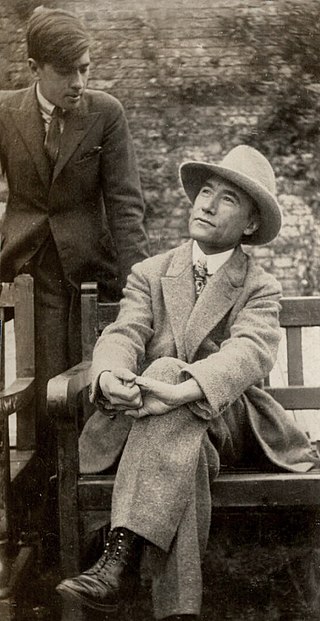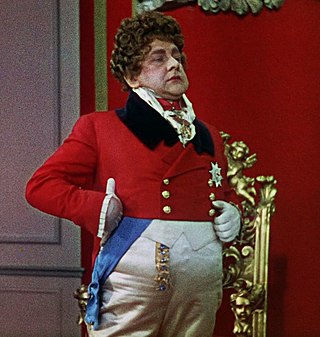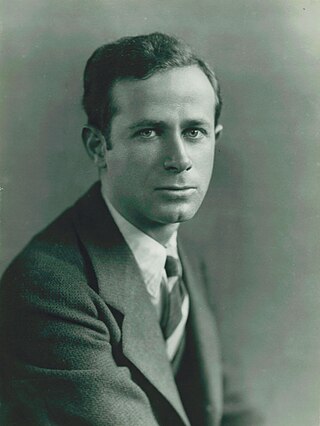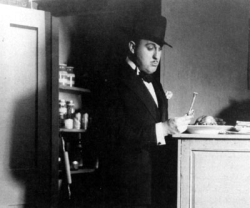
Carl Henry Vogt, known professionally as Louis Calhern, was an American stage and screen actor. Well known to fans of film noir for his role as attorney Alonzo Emmerich, the pivotal villain in The Asphalt Jungle (1950), he was nominated for the Academy Award for Best Actor for portraying Oliver Wendell Holmes in the film The Magnificent Yankee later that year.

Sir Alexander Korda was a Hungarian–born British film director, producer, and screenwriter, who founded his own film production studios and film distribution company.

Henry Koster was a German-born film director. He was the husband of actress Peggy Moran.

Douglass Rupert Dumbrille was a Canadian actor who appeared regularly in films from the early 1930s.

William Riley Burnett was an American novelist and screenwriter. He is best known for the crime novel Little Caesar, the film adaptation of which is considered the first of the classic American gangster movies.

Marc Allégret was a French screenwriter, photographer and film director.

George S. Barnes, A.S.C. was an American cinematographer active from the era of silent films to the early 1950s.

Sam Katzman was an American film producer and director. Katzman's specialty was producing low-budget genre films, including serials, which had disproportionately high returns for the studios and his financial backers.

William H. Daniels ASC was a film cinematographer who was Greta Garbo's personal lensman, serving as the cinematographer for such Garbo-starring films as Torrent (1926), The Mysterious Lady (1928), The Kiss (1929), Anna Christie, Romance, Grand Hotel (1932), Anna Karenina (1935), and Camille (1936). Early in his career he worked regularly with director Erich von Stroheim, providing cinematography for such films as The Devil's Pass Key (1920) and Greed (1924). Daniels went on to win an Academy Award for Best Cinematography for his work on The Naked City (1948).

Bruce Bennett was an American film and television actor who prior to his screen career was a highly successful college athlete in football and in both intercollegiate and international track-and-field competitions. In 1928 he won the silver medal for the shot put at the Olympic Games held in Amsterdam. Bennett's acting career spanned more than 40 years. He worked predominantly in films until the mid-1950s, when he began to work increasingly in American television series.

Ian Hunter was a Cape Colony-born British actor of stage, film and television.

A jungle girl is an archetype or stock character, often used in popular fiction, of a female adventurer, superhero or even a damsel in distress living in a jungle or rainforest setting. A prehistoric depiction is a cave girl.
Lewis D. Collins was an American film director and occasional screenwriter. In his career spanning over 30 years, he churned out dozens of Westerns.

Olaf Hytten was a Scottish actor. He appeared in more than 280 films between 1921 and 1955. He was born in Glasgow, Scotland, and died in Los Angeles, California from a heart attack, while sitting in his car in the parking lot at 20th Century Fox Studios. His remains are interred in an unmarked crypt, located in Santa Monica's Woodlawn Cemetery.

Henry Edwards was an English actor and film director. He appeared in more than 80 films between 1915 and 1952. He also directed 67 films between 1915 and 1937.

Armand Georges Denis was a Belgian-born documentary filmmaker. After several decades of pioneering work in filming and presenting the ethnology and wildlife of remote parts of Africa and Asia, he became best known in Britain as the director and co-presenter of natural history programmes on television in the 1950s and 1960s, with his second wife Michaela.

Melville Jacob Shyer was an American film director, screenwriter and producer and one of the founders of the Directors Guild of America. His career spanned over 50 years, during which he worked with Mack Sennett and D. W. Griffith.

Garry Marsh was an English stage and film actor.
Harry C. Neumann of Chicago, Illinois, was a Hollywood cinematographer whose career spanned over forty years, including work on some 350 productions in a wide variety of genres, with much of his work being in Westerns, and gangster films.

Harry Fischbeck (1879–1968) was a German-born cinematographer who emigrated to the United States where he worked in the American film industry. He was employed by a variety of different studios during his career including Universal, United Artists and Warner Brothers, but primarily for Paramount Pictures. One of his first credits was for the historical The Lincoln Cycle films directed by John M. Stahl.


















